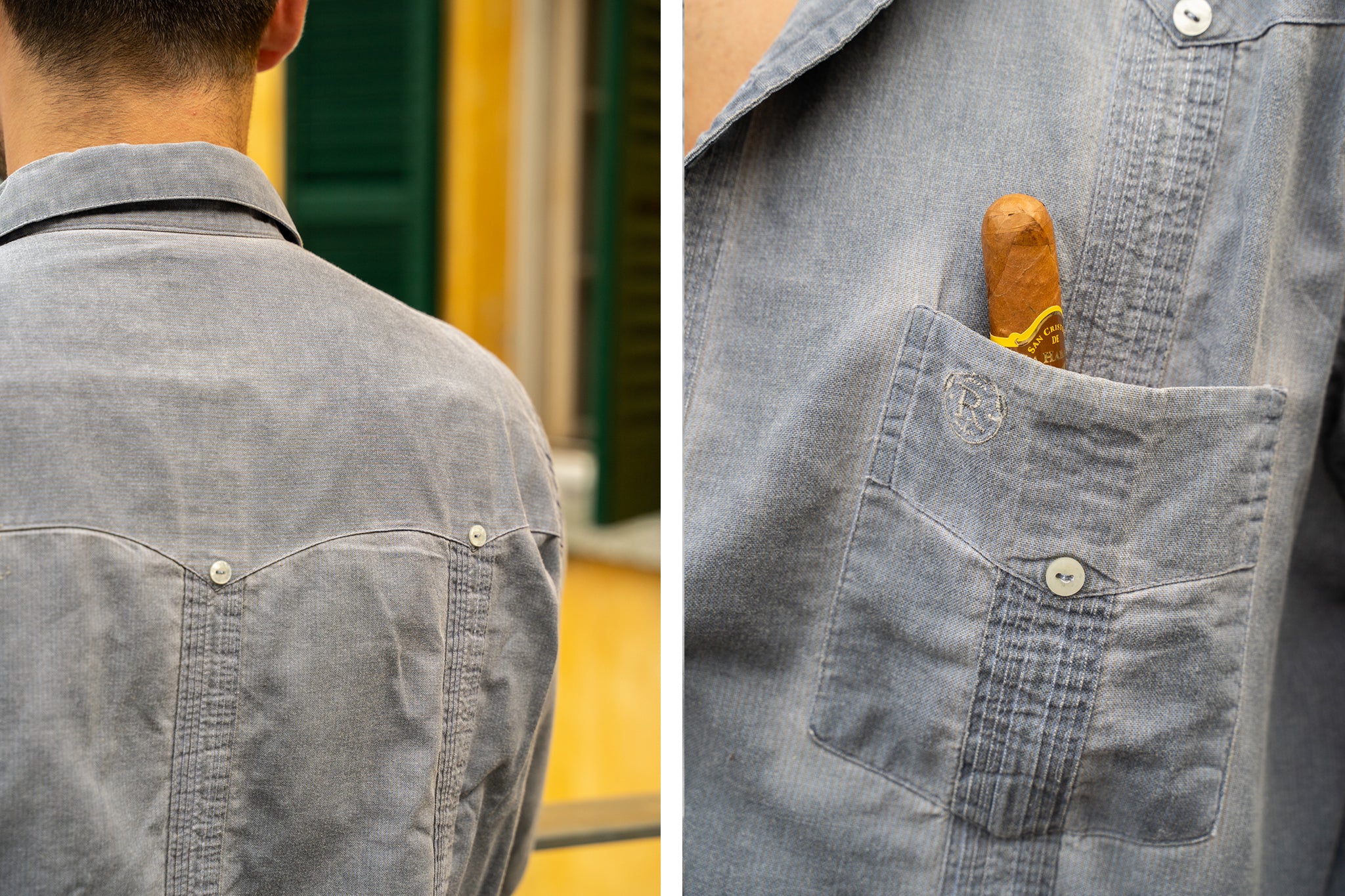By Rikesh Chauhan and Milad Abedi
As with many traditional and classic garments, the origins of the guayabera are long-disputed, with countries including the Philippines, Mexico and Cuba staking claim to its invention. Delving deeper, there are varying tales within the nations themselves as to the guayabera’s origin. In Cuba, the two primary stories both depict wives making utilitarian shirts for their husbands, with one story claiming the seamstress-wife sewed patch pockets in order to help her husband gather guavas (guayabas), while in the second story—and one we particularly appreciate—the shirt was used to hold cigars and other belongings whilst at work. Wherever your loyalty and beliefs lie, it’s safe to say that the guayabera has become an iconic staple against the picturesque Havana backdrop.

The guayabera, worn by Rikesh Chauhan and photographed by Milad Abedi
The rise, and popularity, of the guayabera which we know today came through the common routes—politics, celebrity and cinema. Names including Castro, Hemingway and De Niro are but a few, and that’s not to mention what could arguably be the most circulated picture in menswear of John Wayne and Gary Cooper strutting their summer attire in Acapulco. Celebrity figures were commonly seen wearing the guayabera, along with farmers and factory workers to elder statesmen, artists and everyday gentlemen all across the Caribbean and South America.


The guayabera is generally worn as a casual shirt with its workwear-esqe fixing making it convenient for movement, as well as keeping you cool in a hot climate. The shirt is defined by the vertical alforzas which run straight down through the chest and hip patch pockets, often with snap or button fastenings. The boxy silhouette and straight hem provides extra room for breathability—a wonderful bonus when you’re cooling off by the coast.
When the Cuban government declared the guayabera as the official dress garment, it brought a whole new dimension to the way it was worn. The shirt is, rather surprisingly on first thought, right at home in formal settings. Wearing it instead of a traditional tuxedo or silk dress shirt, it retains the elegance of the more classic options, but the lighter fabric and versatility means that you can make the look more casual without compromise. There’s also the ability to enhance the guayabera with elaborate and ornate decoration and stitching. The alforzas, and intricate craftsmanship can mimic your bib front pleated dress shirt, but doesn’t require a dinner jacket to complete the look.

There’s a certain mischievous sensibility about this commonly-known casual garment, being picked out from the usual settings and dropped into a formal evening. It’s almost disruptive in that it breaks stuffy conventions. It’s in never taking the serious things too seriously. It’s also interesting to see that even in more casual ensembles, the way of wearing them can vary, for example, tucked into high waisted trousers (provided it’s long enough, of course) instead of wearing it out. The beautiful thing about this garment is that, above all else, it was designed to challenge the status quo. It’s a watch this space…


